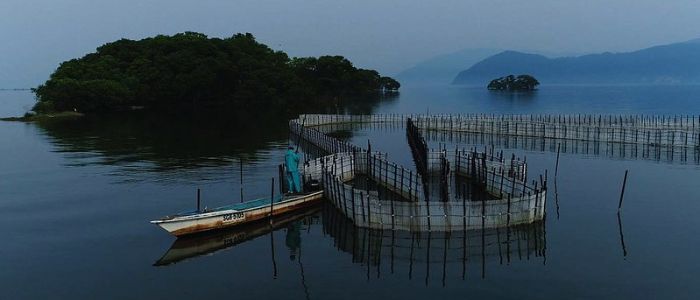Biwa Lake to land integrated system, Japan
GIAHS since 2022

Summary | Partners |
|---|
The Biwa lake to land integrated system is centered on traditional inland water fisheries which have developed along with paddy agriculture that provides safe breeding grounds for spawning lake fish. For more than 1,000 years, the fishermen have been using and improving various types of passive fishing methods to catch migrating fish together with adapted social rules and local culture to ensure the sustainability of the natural resources.
Among these fishing systems, the eri fishing method using a fixed fish net allowing the selective retrieval of fish while avoiding catching juvenile fish. The eri is a traditional set-gear that has created the lakescape called satoumi, together with rice paddies achieving a sustainable conservation of the system.
Its conservation and sustainable management has been possible thanks to the local social system that allows fishermen organizations to conserve autonomously lake resources. A precious resource as Lake Biwa is home to 47 native fish species, including sixteen endemic species. The distinctive difference between rice-fish farming and the Lake Biwa System is that the lake fish have themselves chosen rice paddies - created and maintained by humans - as their spawning and early breeding grounds. This has led to not only ecosystem conservation but also the conservation of natural fishery resources that are targeted in Lake Biwa fisheries.


